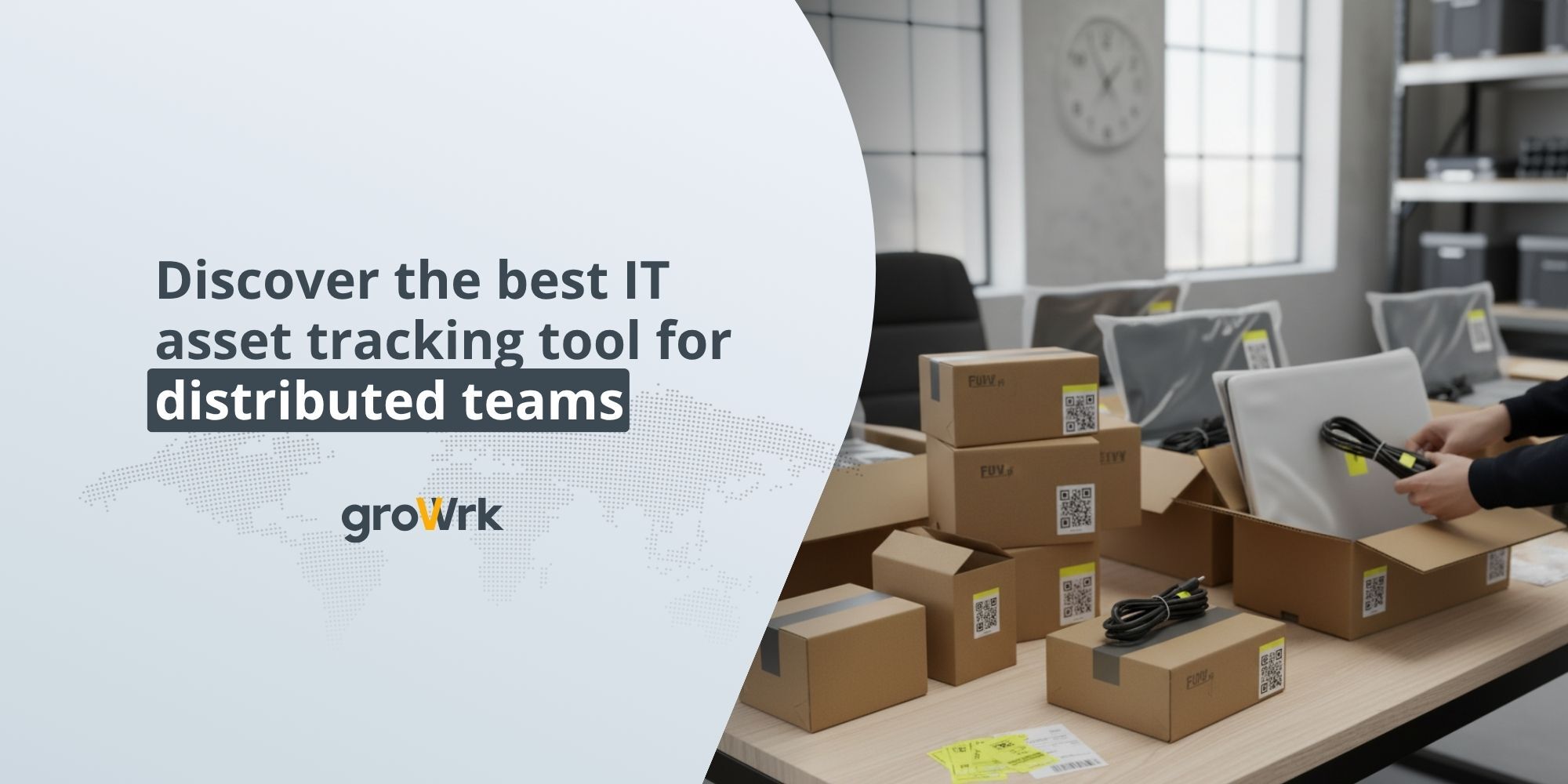IT asset visibility: How can remote organizations overcome its challenges
 Mara Quintanilla
Mara Quintanilla
Seeing all your assets regardless of location is a powerful ability, especially for remote companies. As remote work continues to rise, the need for real-time IT asset visibility will also increase. However, IT asset visibility doesn’t come without challenges.
In a remote working environment, team members can live in the same city or thousands of miles away from each other. That’s why IT Asset Visibility is essential, as it provides companies with a complete and accurate inventory of all hardware, software, and other technology equipment.
In this blog, we will explore the challenges of IT Asset Visibility for remote companies and how you can overcome them. We will also discuss the difference between asset management and asset visibility and their importance for remote companies.
What is IT asset visibility?
Asset visibility refers to an organization's ability to provide accurate information regarding all of its assets. It includes the processes that help map the landscape of digital and physical devices within an organization.
In previous decades, asset visibility relied on manual processes like entering data into spreadsheets by hand or in-person visual assessments. The process was later improved thanks to the digital transformation of spreadsheets, but it still required countless human resources to keep those documents updated. Nowadays, asset visibility is achieved through automated and digital processes.
Regarding IT assets, asset visibility refers to the ability to track, manage, and maintain a complete and accurate inventory of all hardware, software, and other technology equipment within an organization. This includes information about each asset's quantity, location, status, and utilization.
With asset visibility, IT teams can track the lifecycle of their assets from procurement to disposal, ensuring that all assets are being used effectively and efficiently and that any vulnerabilities or risks are identified and addressed promptly.
Overall, asset visibility is vital for organizations to improve operational efficiency, reduce costs, and ensure the security and protection of their assets.
What’s the difference between IT asset visibility and asset management?
IT Asset visibility and asset management are principles that are often discussed together because they go hand in hand. You can’t manage the assets you can’t see, and having visibility over your assets is only helpful if you can control them.
On the one hand, asset visibility refers to tracking and monitoring IT assets' location, utilization, and status in real-time. It provides companies with a comprehensive view of their IT assets, enabling them to make informed business decisions.
Asset Management, on the other hand, focuses on the decision-making process that comes with a complete understanding of a company’s assets, location, and functionality. Remote IT asset management, for example, encompasses the entire lifecycle of IT assets, from procurement and deployment to retirement and disposal.
Both concepts, however, aim to ensure that assets are used optimally, and that data security is maintained throughout their lifecycle.
Why is IT asset visibility important for remote organizations?
Asset visibility is particularly important for remote companies as it helps them overcome the challenges of managing dispersed assets across multiple locations. Some of the reasons why asset visibility is important for remote companies include the following:
Better management
With asset visibility, remote companies can have a centralized view of all their assets, making it easier to manage and track them, even if they are spread out across ten countries.
Improved security
Asset visibility reduces the chances of losing equipment or misplacing devices, thus heightening security.
Increased efficiency
Remote companies can optimize their operations and reduce costs by clearly understanding their assets and utilization. This can help them to make informed decisions about future investments and avoid overspending on unnecessary purchases.
Better compliance
Asset visibility helps remote companies stay compliant with industry regulations and standards by ensuring they have a clear and accurate record of their assets and usage.
Asset visibility is crucial for companies to effectively manage and protect their assets and ensure the optimal functioning of their operations.
What are the challenges of IT asset visibility?
Because of their distributed nature, remote companies can encounter a few challenges regarding IT asset visibility. When devices are spread across multiple locations or countries, there’s room for inaccuracies and misplacement. Here are some of the most common challenges that this process can have:
Low volume visibility
Keeping track of many IT assets can be challenging, mainly when spread globally. This can lead to incomplete or inaccurate asset information, making it difficult for organizations to make informed decisions about their assets.
Time wasting
Gathering and maintaining accurate information about IT assets can be time-consuming, taking valuable time away from other vital tasks.
Easily transfer & maintain assets
IT assets are frequently moved or reconfigured, making it difficult to keep track of their location and status.
Safety and security
A high volume of assets and having different locations can make safety and cyber security a complex task. Companies not only have to guarantee the physical safety of their assets but also handle sensitive information.
Cost
Implementing and maintaining an effective asset visibility solution can be costly, and organizations may need help finding the budget to invest in the technology and resources required.
Technology outdate
IT asset visibility solutions can become outdated quickly, and organizations may need help to keep pace with the latest technology and trends.
How to overcome the challenges of IT asset visibility
As with any process, preventive measures and anticipating issues can help companies minimize the challenges of IT asset visibility. Here are five ways that your organization can overcome them:
Ensure safety and protection
Implementing robust security measures, such as encryption, firewalls, and access controls can help ensure the safety and protection of IT assets and their sensitive information.
Round-the-clock visibility
Implementing a real-time asset-tracking solution that provides continuous visibility of IT assets can help remote companies respond to changes or issues quickly and ensure that assets are being used effectively.
Optimized operation
By automating processes and workflows, remote companies can streamline their operations, reduce manual errors, and improve the accuracy of their asset information.
Adopt a cloud-based solution
A cloud-based IT asset visibility solution can provide remote companies with greater flexibility and scalability, enabling them to respond quickly to changes and easily manage assets in multiple locations.
Regularly review and update processes
Constant monitoring and updating of asset visibility processes can help remote companies to identify and address any issues or areas for improvement and ensure that they use the latest technology and best practices.
Conclusion
By providing companies with a comprehensive view, IT asset visibility enables them to make informed decisions about future investments, reduce costs, and ensure the security and protection of their assets.
With the right Asset Visibility solution in place, remote companies can operate with the confidence that their IT assets are well-managed, secure, and optimized for maximum efficiency.
With Growrk, IT asset management software for distributed teams, you get complete visibility over your IT assets. You can easily manage your inventory and make informed decisions for your business needs. Schedule a demo today to get the full scope of our services.
Also Read : How Tracking and Managing IT Assets Made Easy with GroWrk






